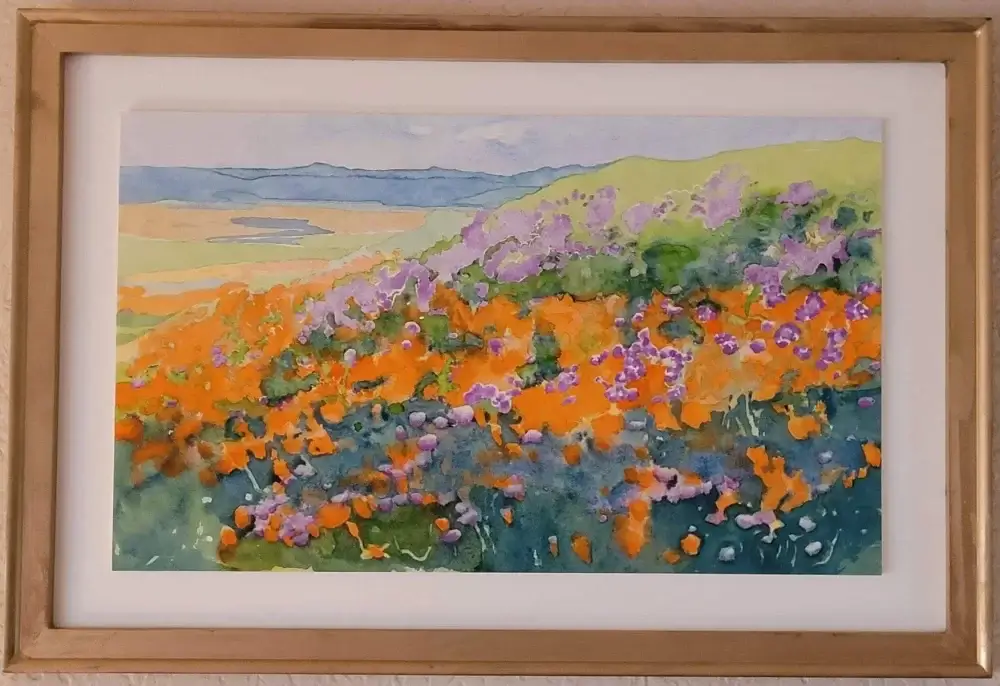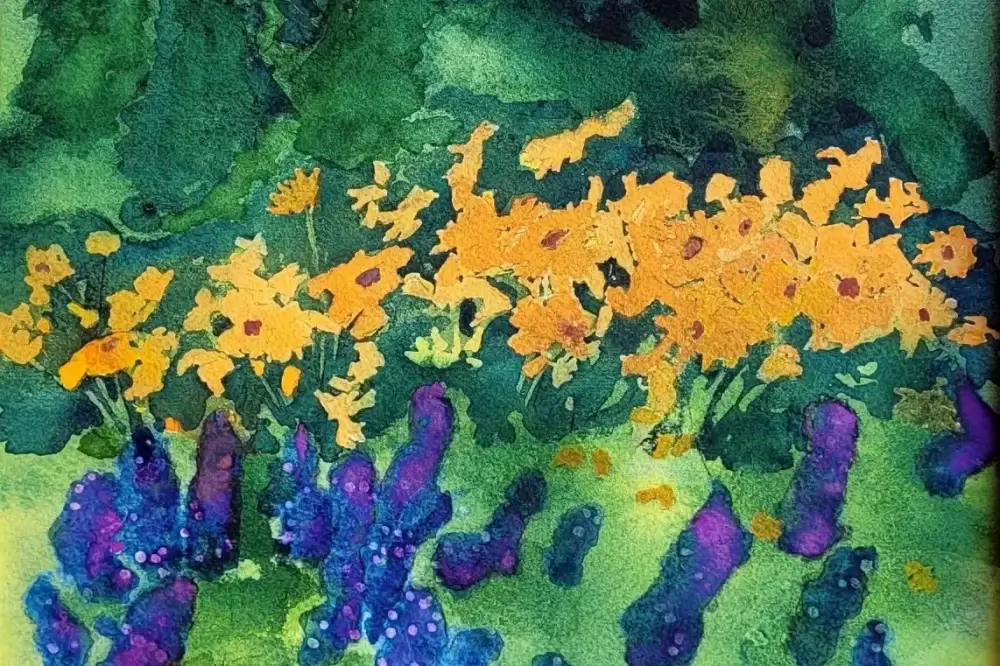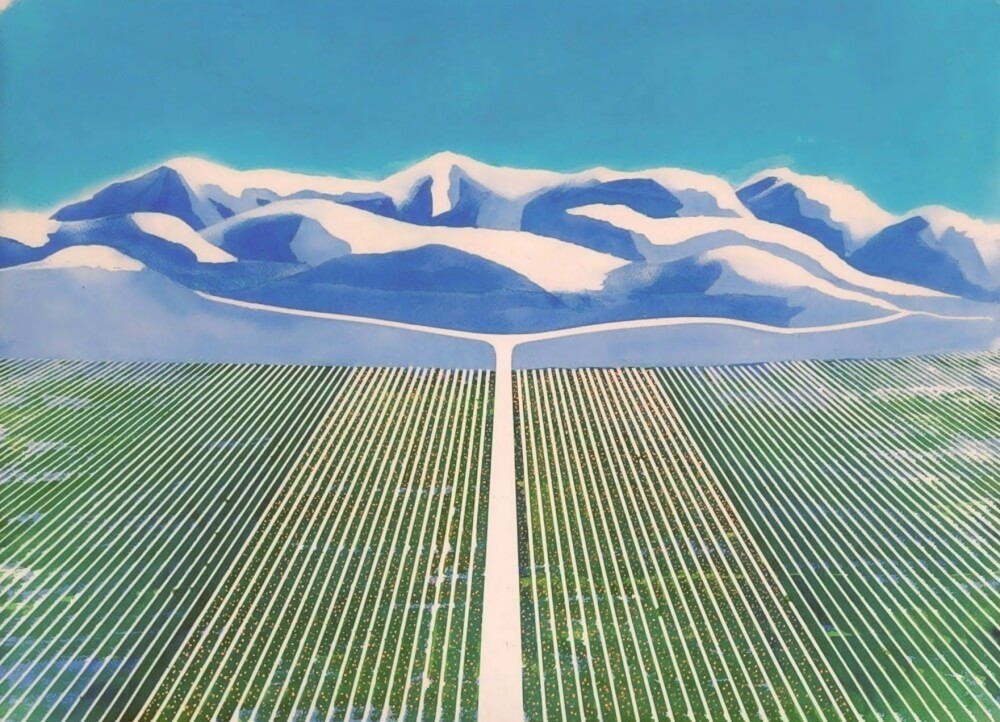
Painting secondary colors with watercolor is a challenge. Painting Poppies and Thistles is a recipe for disaster. The problem is blending. Getting the appearance of a wide hillside filled with orange and purple and green with flowers in descending size (receding distance) increases the likelihood of mud. Mud happens when you mix any two secondary colors because they are opposites. Its yellow-red, blue-red, and blue yellow. Any mixture puts a third primary into the mix, which equals what can be a horrible color.
I’ve tried to overcome the problem with green by painting a layer of blue and using a transparent overlay of yellow. If I’ve got orange and blue next to each other and I overlay yellow into the orange, that is OK. But I can’t let any of the yellow overlay the purple.
This painting, “Poppies and Thistles” took much longer to paint than I imagined. Controlling location, values, colors, and pushing and pulling to get a believable depth, were some of the additional challenges.















You must be logged in to post a comment.